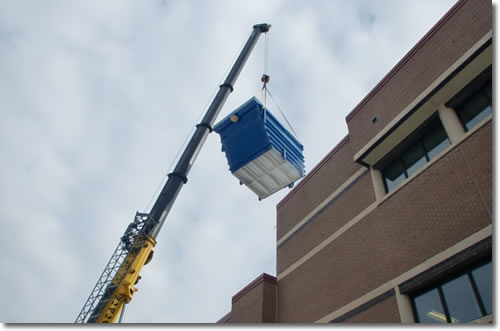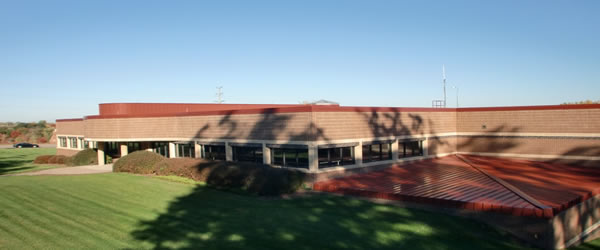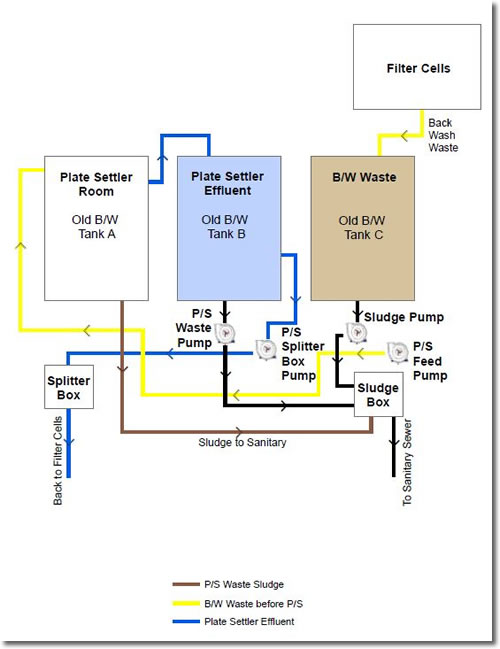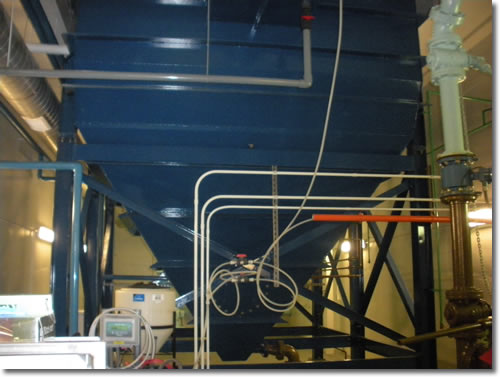Drinking Water Protection
- Drinking Water Protection Home
- About Us
- A-Z Index of Contaminants in Water
- Community Public Water Supply
- Drinking Water Grants and Loans
- Drinking Water Institute
- Drinking Water in Schools and Child Cares
- Drinking Water Revolving Fund
- Laws and Rules
- Noncommunity Public Water Supply
- Source Water Protection
- Water Operator and Certification Training
- Drinking Water Protection Contacts
Related Topics
- Annual Reports
- Drinking Water Risk Communication Toolkit
- Drinking Water Protection External Resources
- Fact Sheets
- Forms
- Invisible Heroes Videos: Minnesota's Drinking Water Providers
- Noncom Notes Newsletter
- Sample Collection Procedures (videos, pictures, written instructions)
- Waterline Newsletter
Related Sites
- 10 States Standards
- Clean Water Fund
- Health Risk Assessment – Guidance Values and Standards for Water
- Minnesota Well Index
- Water and Health
- Wells and Borings
Environmental Health Division
Eagan Fills Its Plates
From the Spring 2013 Waterline
Quarterly Newsletter of the Minnesota Department of Health Public Water Supply Unit, Waterline
A complete list of feature stories can be found on the Waterline webpage.

Plate settlers continue a new trend in water treatment optimization processes. "Once the domain of the wastewater industry as a means of reducing the footprint required for clarification and solids consolidation," said Todd Butz of Treatment Resources, Inc. of Minneapolis, "the process has found a new niche as an efficient method of recovering backwash water that is benefitting more and more water treatment plants." Water conservation is one reward, allowing treatment plants to recover more than 95 percent of their wastewater, but the benefits go beyond that.
"Beyond savings on sewer charges, the bigger impact is operational flexibility and the ability to more quickly turn around a sequence of filter backwash events," said Steve Gilberg, the water production supervisor for the city of Eagan, Minnesota, which recently added plate settlers to its South Water Treatment Plant. Gilberg explained that conventional backwash systems, using backwash tanks, required a polymer to bind with the sludge. "There is a settling time where the sludge particulates must grow and sink to the bottom of the tank - in our case it took about three to four hours. Now, with our plate settler in place, we use far less polymer and can start the reclaim process immediately after backwashing.
"Before, we could do four backwashes a day, and all the backwash tanks would be full. We'd have to wait three to four hours for the poly to settle out. We would then start to pump down our tanks; this would take another two hours for a total turnaround time of six hours. Before the addition of the settler, we could get three to four days of filter run time in the summer if we're lucky. This summer [2012] we increased that nearly 100 percent to six or seven days of run time per filter."
What changed to create such a long filter run time? Gilberg said, "By having a plate settler, less wastewater is recycled back into the splitter box at the head of the plant. With less waste recycled, the filters are less likely to bind, giving us longer filter run times."
Steve Nelson of Bolton & Menk, Inc. noted, "The plate settlers also enabled Eagan to more easily optimize their polymer addition because the solids concentration is uniformly blended prior to the polymer being added. This helps prevent the intermittent overfeed of polymers that had the tendency to carry over onto the filters and contribute to partial filter blinding and decrease filter runs. Jar testing and assessing the current mass balance of solids and desired plant operations was the key to the successful renovation."
South of the Minnesota River amid the also-burgeoning suburbs of Burnsville, Apple Valley, and Lakeville, Eagan has grown from a small community to one of the 10 largest cities in Minnesota. Transportation improvements, including a new Cedar Avenue (Minn. Hwy. 77) bridge and the completion of Interstate 35E across the river, have contributed to more commuters settling in Eagan. In addition, the city has a number of large employers of its own, including the bulk-mail center for the post office, Blue Cross Blue Shield, and West Publishing (now part of Thomson Reuters). It was also home to the world headquarters for Northwest Airlines.
As has been the case with other outer-ring suburbs, Eagan has had to build its municipal services to match population growth, which has more than tripled to 64,000 people since 1980. With water coming in from 21 wells, in 2012 Eagan produced nearly 4 billion gallons of drinking water for its residents and commercial users.

Public water wells began replacing private supply systems in the 1960s, and Eagan put its first water treatment plant into service in 1985. In 1991, another plant was added a few miles to the south, and, like the north facility, removes iron and manganese.
Eagan completed an expansion of the north plant in 2005, doubling its number of filters to 16 and increasing its capacity by more than 80 percent to 22 million gallons per day. The project also included upgrades to the chemical feed systems and sludge handling, the latter in response to more stringent regulations regarding the discharge of backwash water.
Plate settlers were added with the expansion at the North Plant as they were in a later upgrade at the South Plant, but with a key difference. "The North Plant and the South Plant achieved blending in an existing backwash tank," said Nelson, who led the design of both plant renovations. "The difference is that the South Water Plant also converted one of the existing backwash tanks into a plate settler room. This also required the addition of a second story over the buried backwash tank (a new plate settler room) that allows for easy observation and access to the plates, mixers, and flocculator."
"That was the biggest hurdle," said Gilberg of the retrofit. "You don't mess with your backwash tanks. If anything, you want more."
Nelson added, "This was a hurdle in that it seemed intuitively like the city would be losing backwash capacity by losing one of their three backwash tanks. However, the net effect was a great enhancement in the ability to handle backwash water."
The South Plant had three tanks performing conventional backwash. The utility cut off the top of Tank A to fit the plate settler in it. "From our filter cells, we dumped everything into the C tank," explained Gilberg of the process that is now operating. "From the C tank, we pump the waste into the plate settler."
Gilberg said the South Plant benefitted from advances in technology in the years following the expansion at the North Plant as well as learning from the experiences at the North Plant. "If we could do it, we wanted a physical break from the plate settler into the system, so we ran the effluent of the plate settler into the B tank. That was a big thing for us."
Gilberg and Nelson have been tracking the gains in recovery from the plate settler. "We are now recovering 98-plus percent of the backwash water from the filters and are able to reintroduce it into our system," said Gilberg. "Before that, it was about 60 percent, with the rest going down the sewer.
"The turnaround time for filter cells backwashed to Tank C is about two hours. We'll initiate a backwash and dump that water into the C tank. There is a pressure transducer in the C tank that allows us to see the level we want our plate settler feed pump to run. This allows us the flexibility to run the plate settler summer and winter. The plate settler effluent then flows to the B tank, a physical break because if the plate settler would malfunction (usually a polymer issue), we would have time to settle the sludge out in this tank. From the B tank, or effluent tank, we pump clean water back to the splitter box at the head of the plant. The net effect is a 50 percent reduction in time required to backwash water and reclaim eight filter cells."

The plate settler at the South Plant was installed in the summer of 2010, and the utility made adjustments over the next few months. It was fully operational throughout 2012, and Gilberg said, "With the hot, dry summer, it was a great year to really show how this plate settler works.
"It was a benefit to have a plate settler at the North Plant. We had some operational pitfalls with the North Plant settlers, and the improvement from the North Plant was applied to the plate settler at our south facility."
"The way the flocculation chamber ties together with the sludge hopper was carefully specified during the design," added Nelson. "As a result, the plate settlers at the South Plant do not have the tendency to plug up with the filter media."
Gilberg and Nelson said the benefits include a:
- decrease in filter down time as the filters can be backwashed and the water recycled in continuous succession if necessary, effectively reducing the time required to turn over all eight cells by about 50 percent.
- decrease in polymer from .9 milligrams/liter (mg/L) to .2 mg/L.
- 100 percent increase in length of filter run time.
- decrease in energy costs because the motors are running fewer hours.
 |
| The plate settler at the South Plant was shipped in pieces and had a unitized tank construction. Nelson said the design allows for the removal of single plates from the plate settler. |